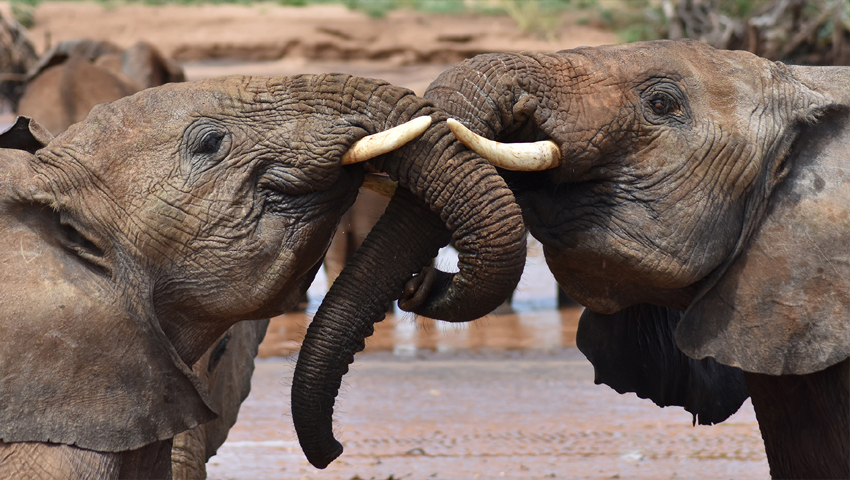Researchers from CSU, Save the Elephants and ElephantVoices used machine learning to confirm that elephant calls contained a name-like component identifying the intended recipient, a behaviour they suspected based on observation. When the researchers played recorded calls, elephants responded affirmatively to calls that were addressed to them by calling back or approaching the speaker. Calls meant for other elephants received less of a reaction.
Lead study author, Michael Pardo, said, “Dolphins and parrots call one another by ‘name’ by imitating the signature call of the addressee. By contrast, our data suggest that elephants do not rely on imitation of the receiver’s calls to address one another, which is more similar to the way in which human names work.”
The ability to learn to produce new sounds is uncommon among animals but necessary for identifying individuals by name. Arbitrary communication -where a sound represents an idea but does not imitate it – greatly expands communication capability and is considered a next-level cognitive skill.
“If all we could do was make noises that sounded like what we were talking about, it would vastly limit our ability to communicate,” said co-author George Wittemyer, a professor in CSU’s Warner College of Natural Resources and chairman of the scientific board of Save the Elephants. He said that the use of arbitrary vocal labels indicates that elephants may be capable of abstract thought.
Elephant and human evolution diverged tens of millions of years ago, but both species are socially complex and highly communicative. Elephants function within family units, social groups and a larger clan structure, similar to the complex social networks humans maintain.
Similar needs probably drove the development of arbitrary vocal labelling – the naming of other individuals with abstract sounds – in both species, the researchers proposed.
Wittemyer said, “It’s probably a case where we have similar pressures, largely from complex social interactions. That’s one of the exciting things about this study, it gives us some insight into possible drivers of why we evolved these abilities.”
Elephants are talkative, communicating with one another vocally in addition to sight, scent and touch. Their calls convey a lot of information, including the caller’s identity, age, sex, emotional state and behavioural context.
Vocalisations – from trumpeting to low rumbling of their vocal cords – span a broad frequency spectrum, including infrasonic sounds below the audible range of the human ear. Elephants can coordinate group movements over long distances using these calls.
Kurt Fristrup, a research scientist in CSU’s Walter Scott, Jr. College of Engineering, developed a novel signal processing technique to detect subtle differences in call structure, and Fristrup and Pardo trained a machine-learning model to correctly identify which elephant a call was addressed to based only on its acoustic features.
Fristrup said, “Our finding that elephants are not simply mimicking the sound associated with the individual they are calling was the most intriguing. The capacity to utilise arbitrary sonic labels for other individuals suggests that other kinds of labels or descriptors may exist in elephant calls.”
Read more on the Colorado State University website
Image: Two juvenile elephants greet each other in Samburu National Reserve in Kenya. Researchers found that elephants have arbitrary vocal labels for each other, similar to human names. Credit: George Wittemyer
